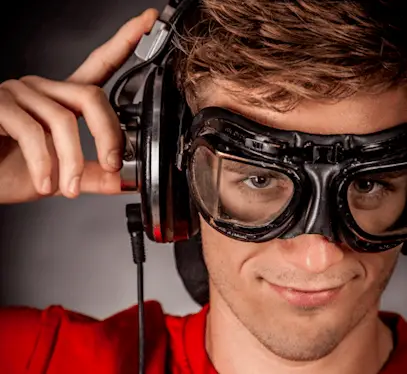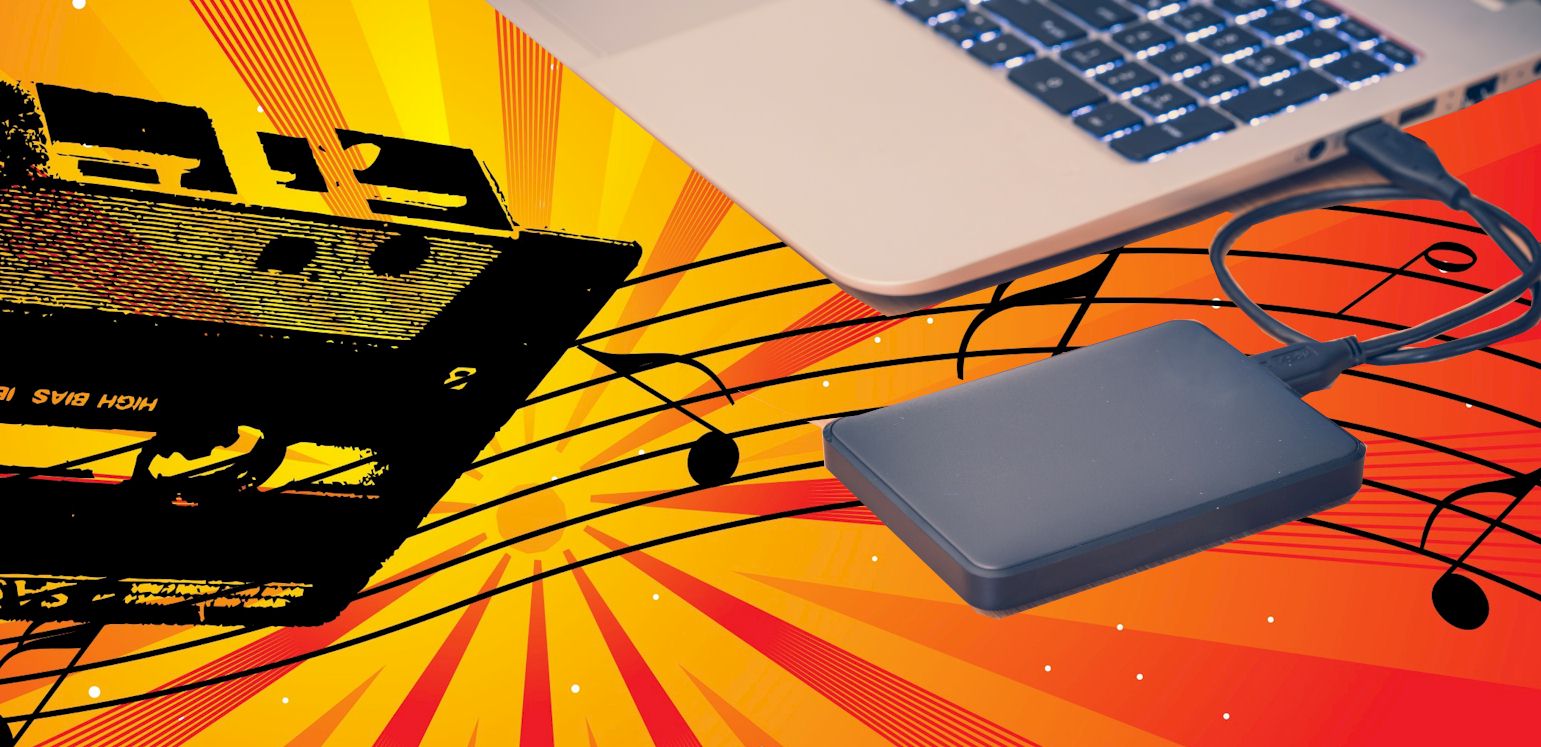External hard drives are a great way to have portable storage with a lot of space in them. You can store a huge number of files on an external hard drive. So, if you are a music lover and have a lot of songs in your collection, an external hard drive can be a great option.
Now, the concern you will come across is playing music from the external hard drive. The good is that you don’t have to go through a lot of trouble to do that either. All you have to do is connect your hard drive to a proper device, and you are good to go.
Still, if you are confused and wondering how to go about this, I have got the perfect solution ready for you. Below I will go through everything you need to know about playing music using the external hard drive you have. Let’s get going with it then.
Contents
Creating your music collection on an external hard drive
How will you extend your music library if you run out of space on your computer or your laptop? This can be a serious concern for those who love to listen to music. In that scenario, the best solution for you is to use an external drive.
Many people choose this as their prime way of creating their music collection. The only issue with this is the fact that you can play music directly from your hard drive. You can’t connect the hard drive to a speaker to listen to music right away.
For that reason, you will need a device that can play music. Something that has DAC and an amplifier in the setup. The best solution is to use a laptop or a computer as the device where you will be connecting the hard drive to listen to your favorite music collection. Connecting your hard drive to these devices is very straightforward, making the whole thing much easier for you.
Having said that, some other options can help you with the purpose. You can go to other routes if you don’t have access or have issues with your PC devices. Typically, any device that can play music and has the USB connectivity option will do the job for you.
Related: Recording Music on Chromebook
Let’s check out how you can get that done in the first place.
How to use an external hard drive to play music on devices
Well, no matter what device you are using, whether it’s a receiver or a music player, the first thing is to find the connectivity option. Usually, most of the external hard drives you get out there these days have a USB connectivity option. This means if you want to access the files on the hard drive, you will need a device with the USB connectivity option.
Step1: Ensuring the device is capable or not
First, you will need to make sure that the device you are thinking of using has two key components. It should have a DAC and an amplifier. Without these two components, you can’t even think of converting those binary-coded digital files into music. So, make sure you are choosing equipment that comes with these components.
Step 2: Connecting the hard drive with the device using a USB cable
Once you find that out, you can simply use a USB cable that is compatible with the hard drive and the device you are using as well. Just connect the cable to the ports of your hard drive as well as your device. Then, you should get access to your complete music library that is stored on the hard drive.
Step 3: Loading up the music.
If there are music files supported by the device you are using, you shouldn’t have any problem. The files will load up on the device by themselves. All you have to do is press start and play the music. You will usually have next and previous buttons to change songs. But if you are using a modern device, you should have access to everything on the touch screen or remote control.
How you can use a computer or a laptop with an external hard drive for music
Even though it’s not that difficult to figure out how to connect your external hard drive to your personal computer, I will still get you through that very quickly.
There are several ways and things you can do to make sure you can play music from the external hard drives in your computer.
Step 1: Getting the proper software
First of all, you will need to get music player software on your computer that can load up the files on your hard drive.
A tip I can share with you is that you can try using software that has cloud-based storage. That way, you can even create your playlists using the music stored in your hard drive in that software. And whenever you load up the hard drive on your computer, the playlists will also load up.
One of the most popular choices you can try out is iTunes. If you are currently using it, then the process is much simpler. You just change the iTunes music directory to your external hard drive, and that’s it. Your iTunes account will start loading up songs from your external hard drive to give you access to all the songs.
Step 2: Choosing the directory
Once you have that, simply open up the software. You should find a folder directory that decides the source for loading your music files. All you have to do is, choose your external hard drive folder as the directory. And that’s pretty much it.
Step 3: Loading up the music and playing it.
All the music from your external hard disk should load up on the music player library. You can start listening to your favorite music stored in your hard drive right away.
Related: How to Record Myself Singing With Background Music
What are the advantages of using an external hard drive for music?
Now, it’s common for people to wonder, what’s the point of having a separate hard drive for storing music. You get several advantages from doing this that you won’t understand if you aren’t a music enthusiast. Let’s check out the benefits of doing this to learn why you should be doing this, too, if you love listening to music and collecting them.
Saving space on your primary device
I mean, if you are using a laptop with limited storage, then you probably won’t have enough space to store your music, right? You will mostly have things related to your work or your business stored in it. You may even have movies or other stuff as well.
Amidst all that, storing thousands of music on your device that you won’t be listening to may be a bit pointless. That’s why having a separate hard drive for storing music is much better, as you don’t need to worry about wasting any internal space of your device.
Portable access to your music library
When you have all your favorite music stored on your external hard disk, you simply carry your music library with you. No matter where you go, you can still have your favorite music coming along with you. This way, you can access all your music whenever you go traveling.
This is a great solution for those who use Desktop PCs. Because they can’t carry their computers to everywhere, they go. And storing that many songs on a smartphone are surely not the play. In that scenario, having an external hard disk works out great.
Storing high-quality audio files
This advantage can make a huge difference and turn many people towards having an external hard drive for music.
As you may already know, high-quality audio files formats like WAV FLAC are typically very large. They are an uncompressed form of audio files so that you can get the best possible audio quality from them.
So, if you want to store the best sound quality files on your device, you will need to have a lot of space dedicated to that. Most of the time, you can’t do that because there are other things you may need daily that you can discard to have music in their place.
Because of that, many people sacrifice the quality and store mp3 file formats to save up space. But with an external hard drive, you don’t have to worry about space at all. You can store as many high-quality audio files as you want without worrying about running out of space.
Usually, these are the advantages that you can have with a separate music collection on an external hard drive. If you tend to struggle with organizing or creating your music library, an external hard drive can surely help out a lot.
Conclusion
Summing it up, playing music from an external hard drive isn’t that difficult if you have the correct device. It also has its perks and advantages that you can get as well. The only thing you need to check out is whether your device is compatible or capable of playing music on it or not. If it fulfills the criteria and has the compatible connectivity option, you don’t have to worry at all.

HI, John Andrew here. I’ve been an audiophile since I was a little kid. I’m an original member of myaudiolover . It emerged as a way for me to share my passion and knowledge for audio technology. If you’re looking for tips, techniques, and insights about audio-tech, that can enable your productions that professional edge, then MyAudioLover is the place for you!

